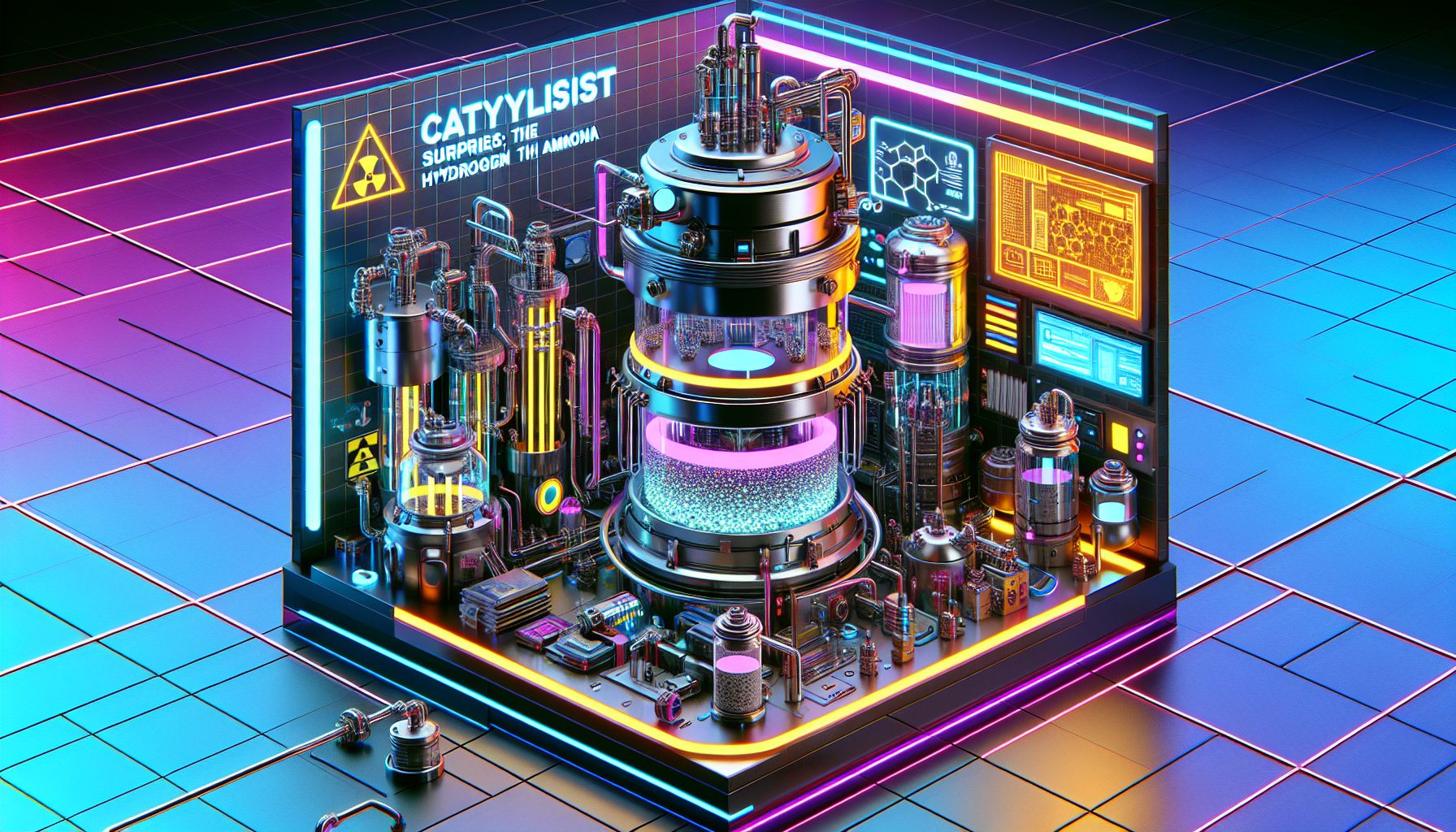Catalyst Surprises: Cracking the Hydrogen Code with Ammonia!

London, Sunday, 8 June 2025.
Efficient ammonia catalysts crack hydrogen’s cautious shell, promising cleaner energy. This game-changer boosts hydrogen production, tackling storage woes and shaping a greener, more sustainable future.
Ammonia’s Promising Role in Hydrogen Production
Ammonia is striding ahead as a key player in the hydrogen economy. Its robust properties make it a compelling hydrogen carrier. You see, ammonia packs a punch with a high hydrogen density—about 17.6% by weight—and an impressive volumetric energy density of 12.92 to 14.4 MJ L−1. These traits position it well above traditional Li-ion batteries or even methanol energy densities, offering an efficient, cost-effective solution in the hydrogen supply chain [12].
Catalysts: The Game Changers in Ammonia Cracking
Recent advancements in catalysts are revolutionising ammonia cracking processes for hydrogen production. Scientists have honed in on cobalt catalysts for low-temperature applications, an area ripe for innovation. By focusing on the kinetic and thermodynamic perspectives, these new catalysts promise improved efficiency in cracking ammonia, making the hydrogen dream more achievable and scalable [1].
Addressing Hydrogen’s Transport and Storage Challenges
Transporting and storing hydrogen has always been a logistical headache—until now. By using ammonia as a transport medium, we can side-step these issues. Ammonia’s mature storage and shipping methods make it an attractive candidate to handle hydrogen, reducing costs and risks associated with traditional hydrogen storage. This innovation could drastically change the landscape of renewable energy deployment, paving the way for on-site hydrogen production and presenting us with new opportunities to harness this clean energy source [1][12].
Future Directions: More Than Just a Lab Experiment
Looking to the future, the marriage of nanotechnology and machine learning presents thrilling opportunities to fine-tune ammonia cracking processes further. By focusing on improving catalyst stability and performance, researchers aim to enhance reaction efficiency, delivering greater returns on energy investments. If we play our cards right, these technological advancements could soon see widespread practical application [1][12].
Ammonia Electrolysis: A More Efficient Pathway?
Electrolysis, the poster child of hydrogen production, is getting a makeover with ammonia in the folds. By requiring only 1.55 Wh.g−1 of hydrogen, ammonia electrolysis is a whopping 95% more energy-efficient than water electrolysis. This drastic improvement could mean big things for the future of hydrogen as a renewable energy option, positioning ammonia as not just an intermediary but an integral part of the global energy ecosystem [12].
Conclusion: Towards a Hydrogen-Powered World
So, what’s the bottom line? The potential of ammonia as a hydrogen carrier stands as a beacon of hope for a sustainable energy future. With ongoing advancements in catalyst technology and production processes, ammonia might just hold the key to a full-scale hydrogen economy. As researchers continue to unravel its potential, hydrogen’s cautious shell seems more ready than ever for cracking [1][12].